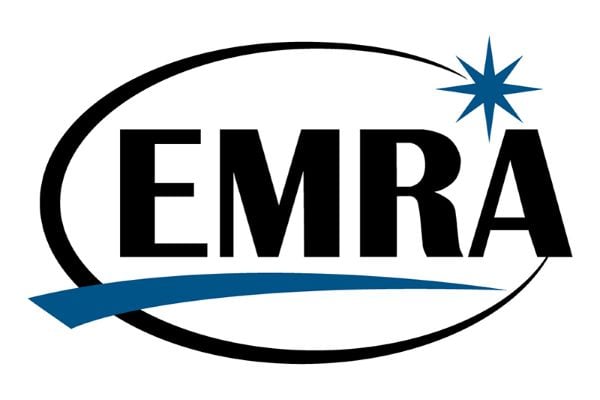OPINION: Are We All Actually in the Same Boat?
Christian Casteel MSIV, Kansas City University of Medicine and Biosciences
EMRA MSC Southcentral Representative
“We are all in the same boat.” A good-faith and commiserating phrase we hear often in medical school. Whether in regard to the collective struggles and financial stressors of studying for boards or applying to residency, the implication is that every medical student endures the same level of challenges throughout this process. But is that really true? Are we all actually in the same boat? Almost certainly not. Not only from my personal experience coming from a low-income household, but the data reveals that there is an enormous socioeconomic gap within the cohort of medical students in the United States, and the gap has been unchanged for decades. This divide becomes increasingly problematic for us in the medical community as we recognize the value in training a socioeconomically diverse physician workforce.
Anecdotally speaking, I come from a household in rural Missouri. My mother, a bartender and one of the hardest workers I know, had me as a young teenager, and was unable to raise me on her own. I became a ward of the state, was later taken in by my grandparents, and was the first in my immediate family to graduate high school. I know many other classmates and colleagues face different challenges that affect their experience during medical education. There are future doctors among us who are immigrants, were in the foster system, face racial and gender bias, and have experienced tragedy and illness. Ask these students about being in the same boat and they will likely tell you their boat feels more like plank. So maybe it should not be so surprising that there is a lack of socioeconomic diversity in medical school.
Data shows that over three-quarters (76%) of all matriculating medical students in the last 11 years come from households in the top 2 quintiles of parental income, while only 5% of all matriculants were in the lowest household quintile. Nearly a quarter (24%) of medical students report a parental household income in the top 5%. This distribution has been constant for the last three decades. The implications of this disparity reveal itself when looking at debt burden data among medical students. In 2016, roughly 27% of graduating medical students reported earning their degree debt free, which is a 16% increase in debt free doctors from 2010. On the surface, those statistics might make incoming medical students feel sanguine about their inevitable debt prospects. But this increase in debt free graduates occurred despite their mean scholarship funding decreasing from $135,186 to $52,718 over the same time period. So, there is an increasing number of students graduating debt free despite the increasing cost of attendance, while the rapidly growing amount of medical student debt that is accrued is disproportionately being shouldered by those who come from lower income households.
Debt of this magnitude can place significant stress, not just on the student, but on their family as well. My family was initially hesitant about the idea of me going to medical school due to the debt burden, not fully understanding who the cost would fall on. They were also unable to help with the cost of applying to medical school forcing me to take on thousands of dollars in credit card debt just for the opportunity to become a physician. Some students need to provide financial support for their families and find themselves needing to hold down a job while in medical school. The already existing stressors of studying for boards and applying to residency become compounded with the additional worry of cost.
There are numerous mechanisms which can and have been implemented in attempts to increase socioeconomic diversity in medical school admissions: holistic review of applicants and collaborating with undergraduate and community institutions as some examples. Recently, a few notable medical schools, such as New York University School of Medicine, have committed to providing tuition free education. It remains to be seen if these measures will have tangible effects. Given that household income is so strongly entwined with educational outcomes, I believe focus should be directed toward students at the middle school and high school level. I had only ever seen a doctor growing up if I was injured and needed to be taken to the Emergency Department. I did not have any family or friends who knew any doctors personally. I was entirely unaware of the process of how to become a physician until I was a sophomore in college. This is common for schools in medically underserved areas. Concentrating educational resources and outreach towards younger students at this level may provide them with the only exposure to medical education they will ever get. I recognize the fortuitous nature of how I discovered medicine. For me, exposure was my opportunity. The chance to become a physician should not rely on serendipity or household income.
References:
- Youngclaus, Jay, and Lindsay Roskovensky. “An Updated Look at the Economic Diversity of U.S. Medical Students.” Aamc.org, Analysis in Brief, Association of American Medical Colleges, Oct. 2018, www.aamc.org/system/files/reports/1/october2018anupdatedlookattheeconomicdiversityofu.s.medicalstud.pdf.
- Justin Grischkan, BA. “Distribution of Medical Education Debt by Specialty, 2010-2016.” JAMA Internal Medicine, JAMA Network, 1 Oct. 2017, jamanetwork.com/journals/jamainternalmedicine/fullarticle/2652831.
- “Medical Student Debt.” AMSA, www.amsa.org/advocacy/action-committees/twp/medical-student-debt/.
Related Content






